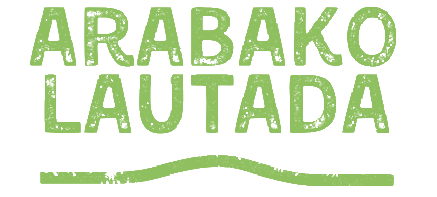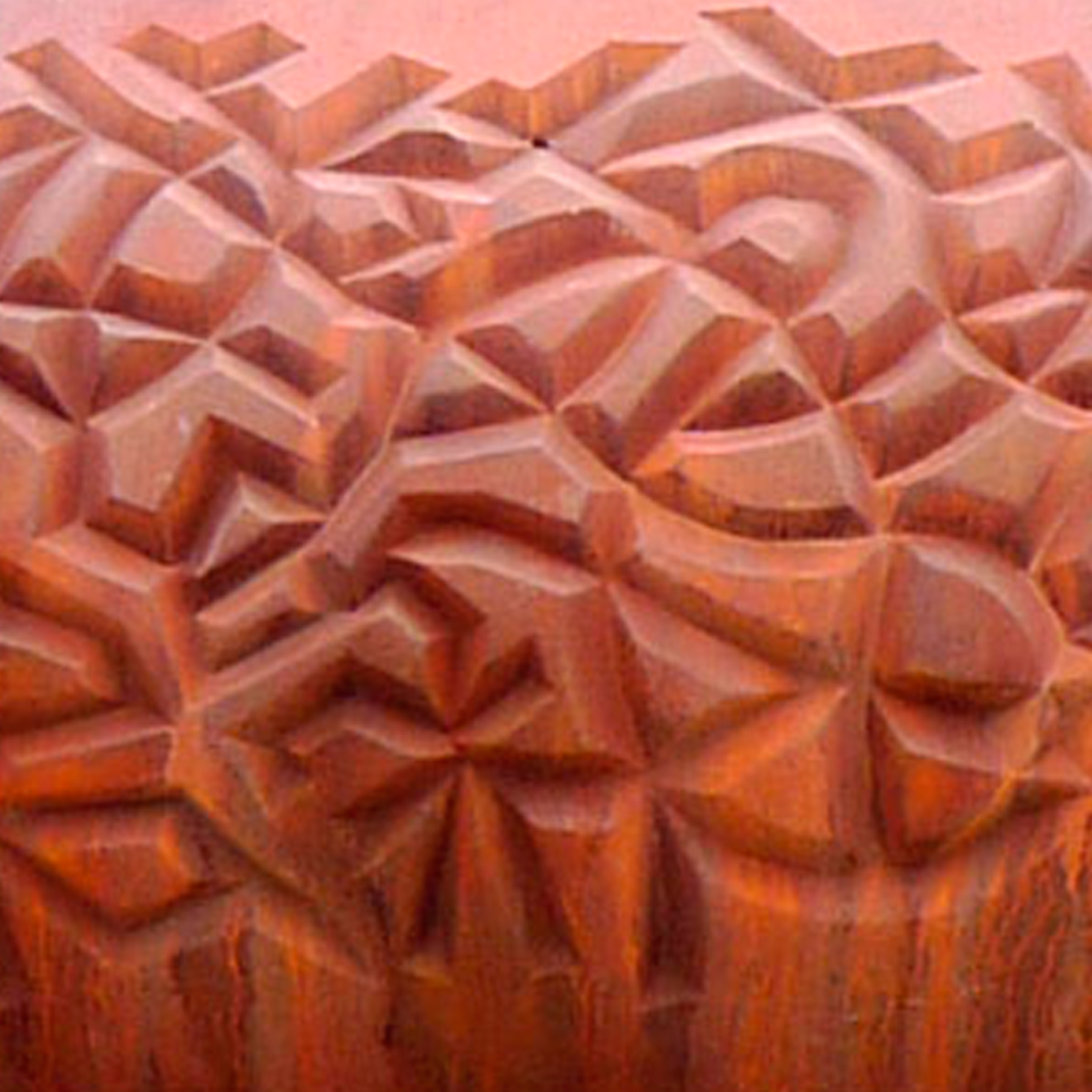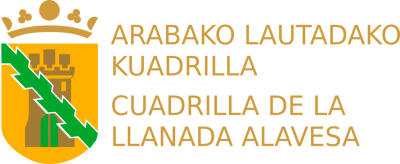HERITAGE
HERITAGE
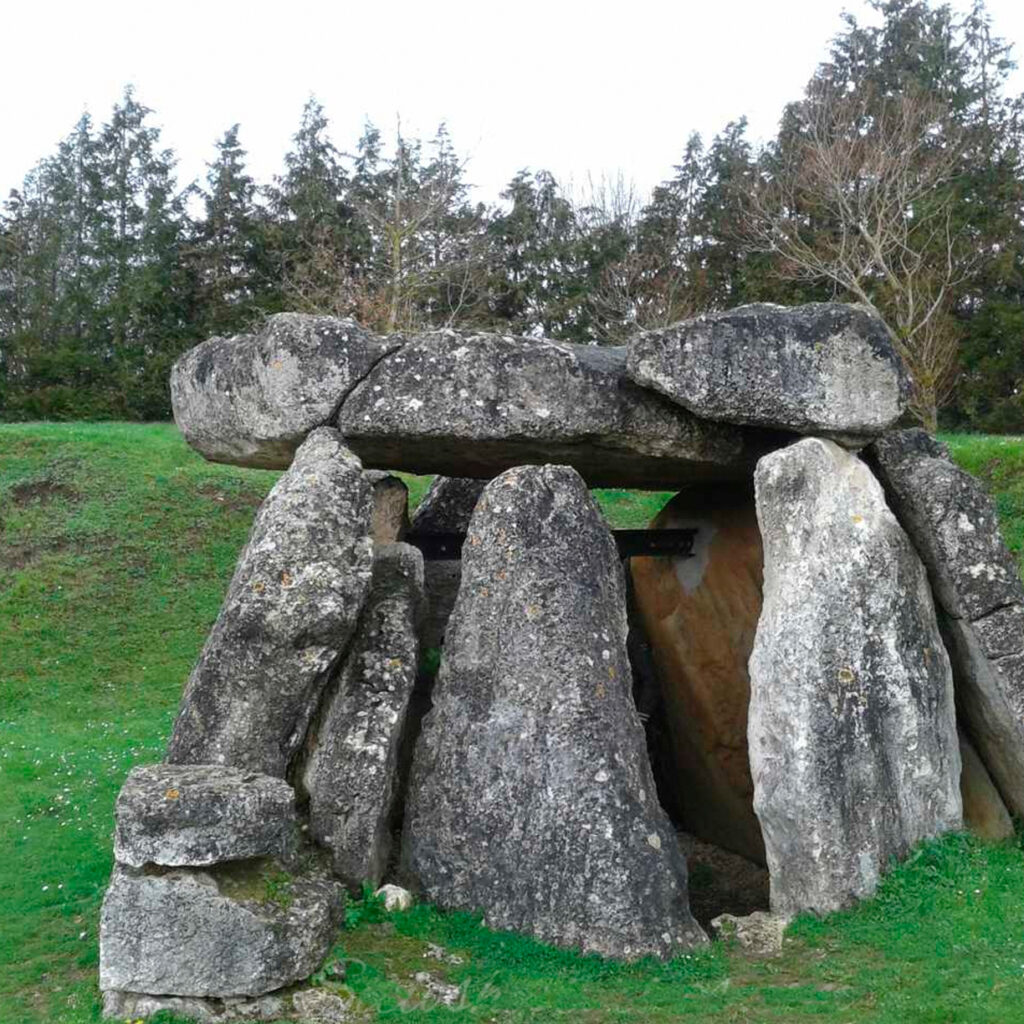
Aizkomendi Dolmen (Egilatz)
Near the centre of Egilatz, you’ll find the Aizkomendi Dolmen, a Bronze Age burial monument that is currently the largest in the Basque Country.
The chamber is comprised of ten large slabs, covered by a rock. It originally contained a 6 metre corridor accessed from the central chamber, but it was destroyed shortly after its discovery in 1832, along with the remains found inside.
Other Details of Interest
Type of resource: Archaeological site – Megalithic monument
Period: Neolithic – Metal Ages
Hours: always open
Guided tour: NA
Accessibility: the dolmen site has its own car park a few metres away.
More information/contact:
Alavese Plains Tourism Office
Calle Mayor, 8. Agurain/Salvatierra. 01200
0034 945 30 29 31.
2turismo@arabakolautada.eus
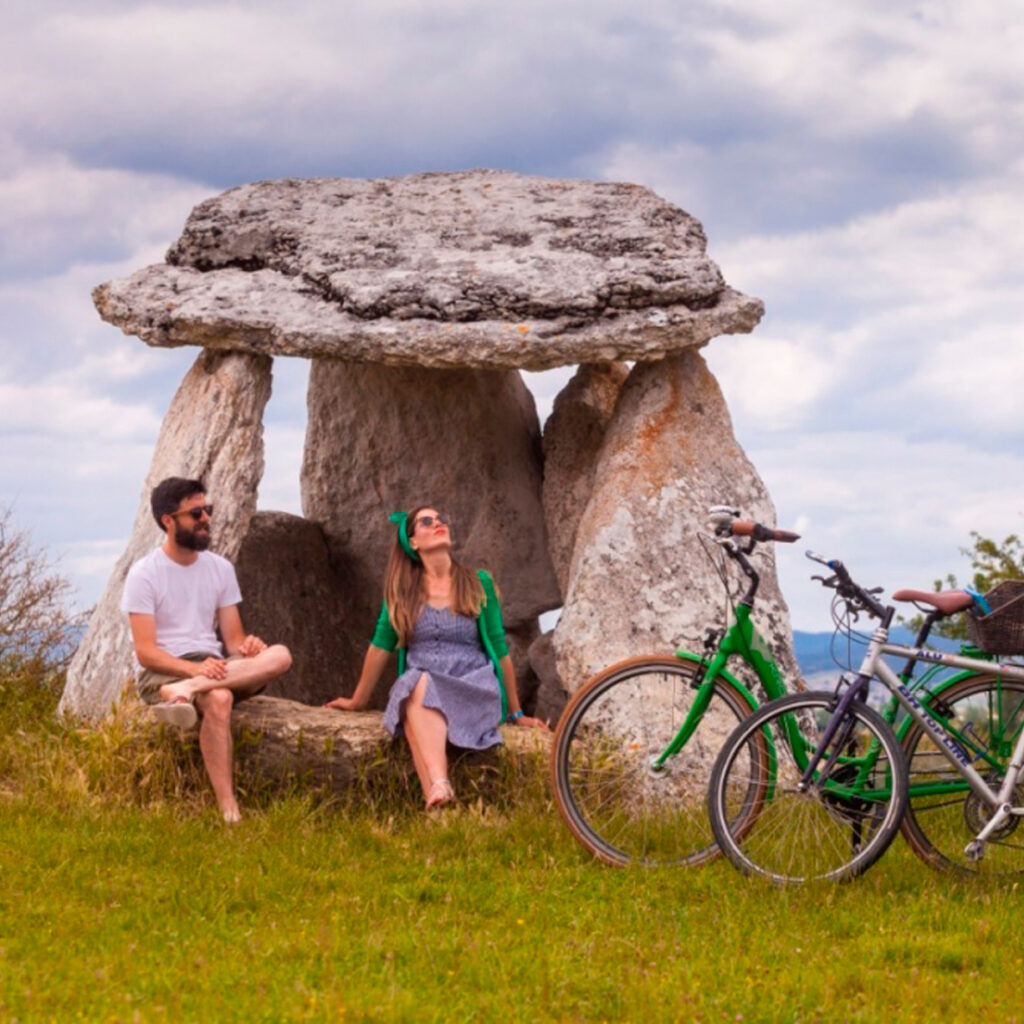
Dolmen de Sorginetxe
Near Arrizala, to the south of Agurain, lies the Sorginetxe Dolmen built in the Neolithic Era. During this time, shepherds buried their dead in these types of constructions, as evidenced by the human remains found in the excavations done in the late 19th century.
Its chamber is comprised of 6 slabs, one of which has fallen, and it is covered by another large slab. This dolmen is home to multiple legends, including one that it was built by witches. This explains its name as Sorgina means witch and etxea means house in Basque.
Other Details of Interest
Type of resource: Archaeological site – Megalithic monument
Period: Neolithic – Metal Ages
Hours: always open
Guided tour: NA
Accessibility: the dolmen site has its own car park a few metres away.
More information/contact:
Alavese Plains Tourism Office
Calle Mayor, 8. Agurain/Salvatierra. 01200
0034 945 30 29 31.
2turismo@arabakolautada.eus
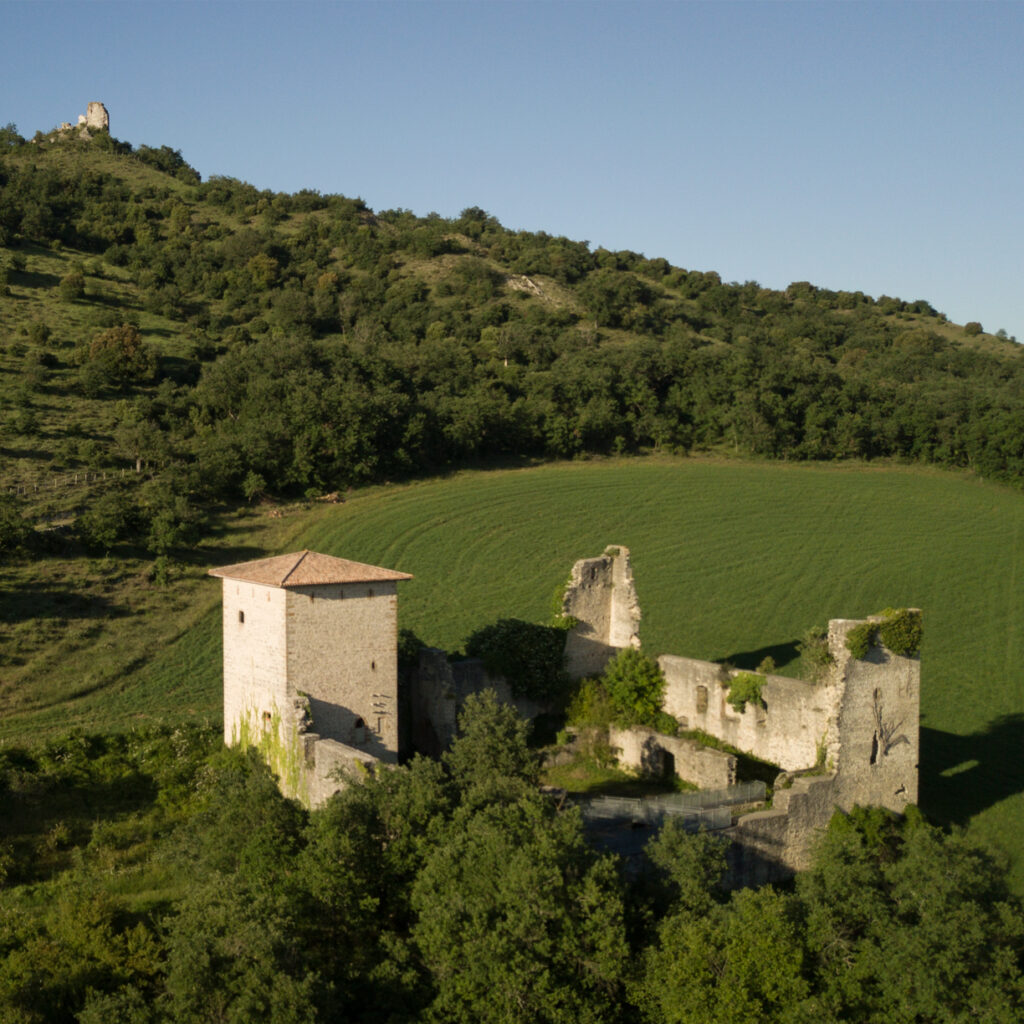
Gebara Palace and Castle
At the top of a mountain in the municipality of Barrundia, near the centre of Gebara, you’ll find what remains of the castle built in the 10th century and rebuilt in the 15th. Although it was torn down in 1839 after the first Carlist uprising, a few one metre thick walls still remain, along with a number of vaulted galleries below.
One of the legends about why no one lived in the castle is that it was the residence of an evil goblin who would terrorise anyone who came near it. Its chamber is comprised of 6 slabs, one of which has fallen, and it is covered by another large slab. This dolmen is home to multiple legends, including one that it was built by witches. This explains its name as Sorgina means witch and etxea means house in Basque.
Other Details of Interest
Type of resource: Castle remains
Period: 11th century
Hours: always open
Guided tour: NA
More information/contact:
Alavese Plains Tourism Office
Calle Mayor, 8. Agurain/Salvatierra. 01200
0034 945 30 29 31
2turismo@arabakolautada.eus
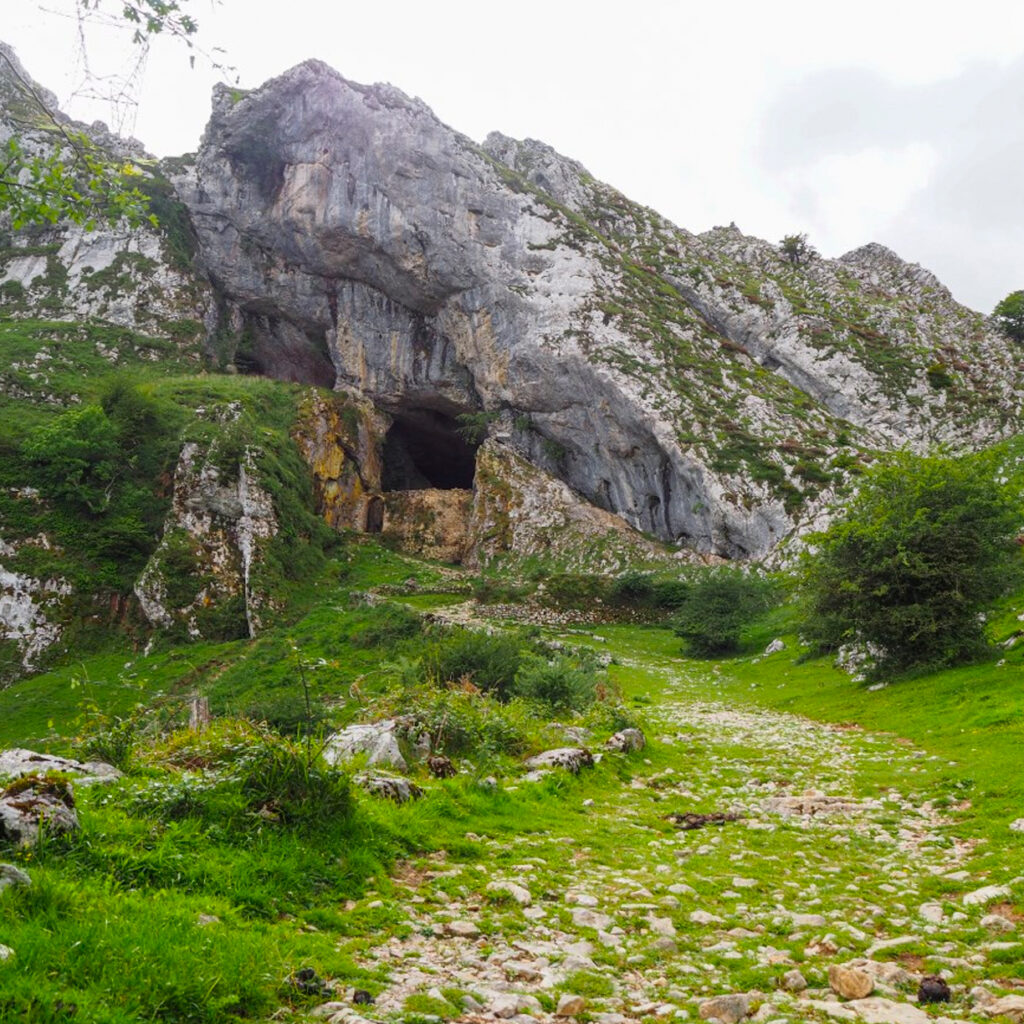
San Adrián Tunnel
The San Adrián Tunnel is a natural cave 1,000 m above sea level in Aizkorri-Aratz Natural Park. The tunnel pierces through a rock mountain and boasts spectacular surroundings.
It divides the Basque provinces of Gipuzkoa and Álava. It is also historically a location where pilgrims, merchants and kings would pass through over the centuries, as it is an important point of connection between the Iberian Peninsula and the rest of Europe. It is on one of the interior routes of the Way of St. James as well as the Royal Post Route and the Ignatian Way.
It may only be 70 m long, but it houses the Hermitage of San Adrián with a Medieval path leading to it, clearly indicating the tunnel’s past importance as a key connection point.
Other Details of Interest
Type of resource: Nature, religious
Hours: always open
Guided tour: NA
Accessibility: The nearest Alavese town to the tunnel is Zalduondo. From there, you can follow a paved trail on foot toward the Zumarraundi area (known as “Las petroleras”). It’s about a five kilometre walk on a path not evenly maintained. There is some elevation gain and it is somewhat difficult.
More information/contact:
Alavese Plains Tourism Office
Calle Mayor, 8. Agurain/Salvatierra. 01200
0034 945 30 29 31.
2turismo@arabakolautada.eus
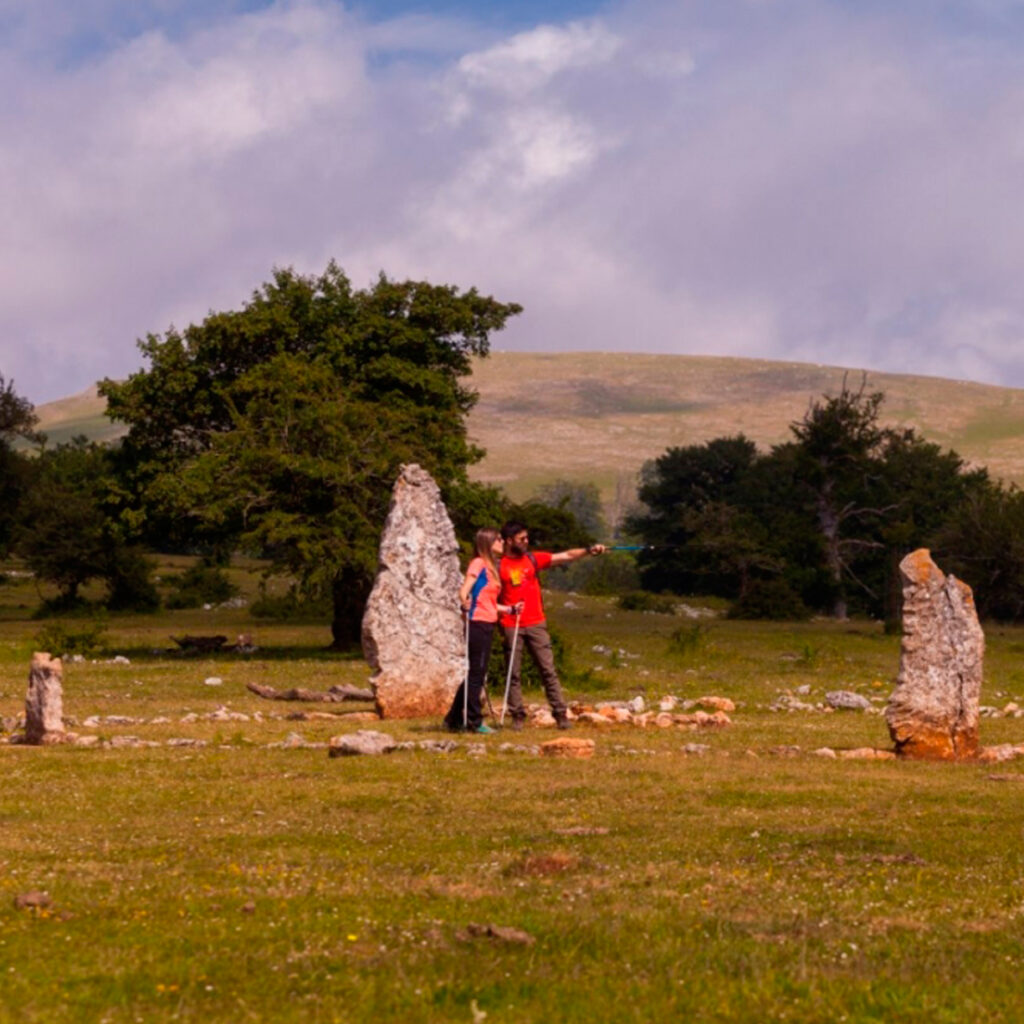
Legaire Megalithic Park - Mendiluze Stone Circle
The Mendiluze stone circle was discovered in 1983 by Isidro S. de Urturi on the fields of Legaire, in the Entzia mountain range and excavated one year later by archaeologist José Ignacio Vegas Aramburu.
It is a circle of small stones with four large menhirs jutting out. An internal structure was found inside: a rectangular cist containing bones and coal. The archaeological studies established that the Basque stone circle was made by pastoral communities living in the area’s mountains at the end of the Bronze Age and Iron Age (approximately 1,000 BCE). The monument is nearly 2,700 years old and people from the area were buried there.
Other Details of Interest
Type of resource: Archaeological site – Megalithic monument
Period: Prehistory, Iron Age
Hours: always open
Guided tour: NA
Accessibility: Mendiluze stone circle is approximately 1 km (20 minutes walking) from the Legaire fields car park. It is an easy walk.
More information/contact:
Alavese Plains Tourism Office
Calle Mayor, 8. Agurain/Salvatierra. 01200
0034 945 30 29 31
2turismo@arabakolautada.eus
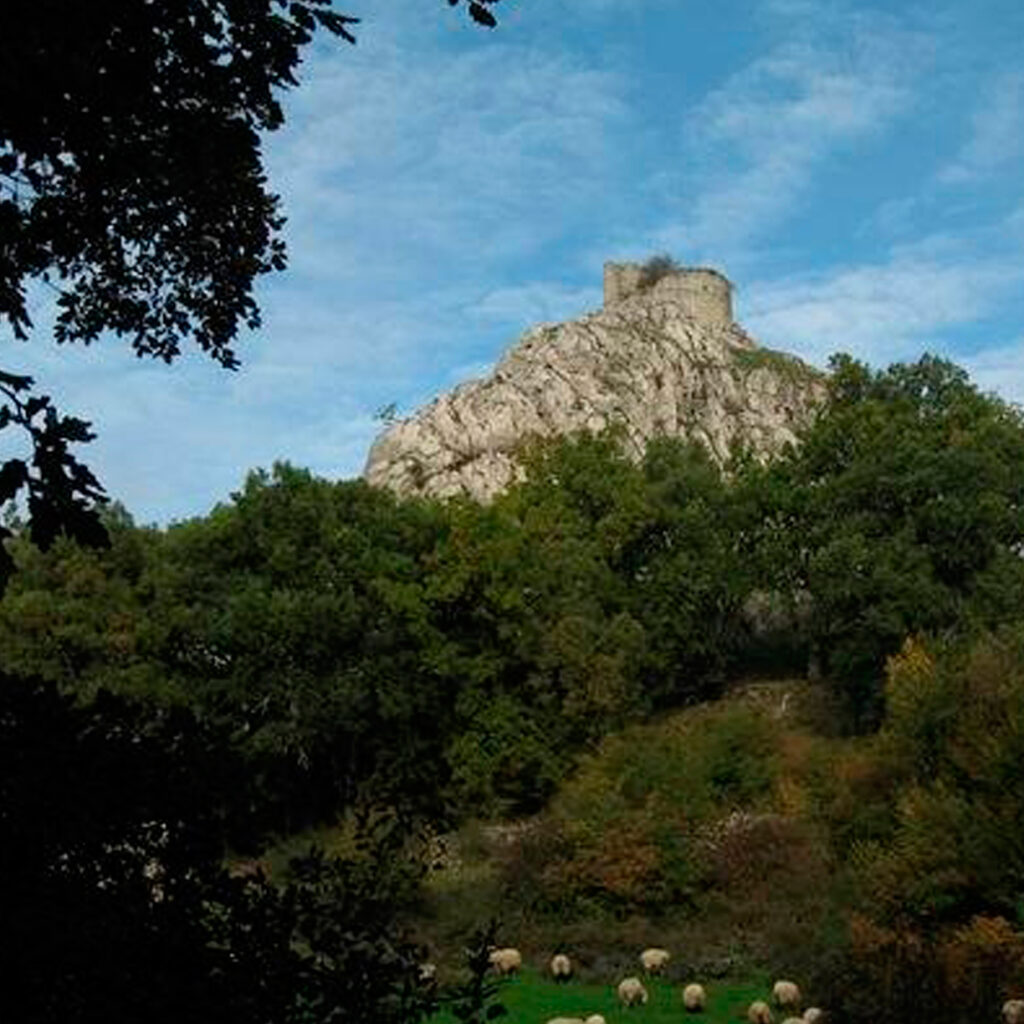
Marutegui Castle
Marutegui castle is perched atop a mountain in the town of Araia. It was built for border defence in the High Middle Ages. It is in a place referred to as Murutegui (also known as Marutegui).
It was founded in the 8th century by King García Iñiguez of Navarre at the end of the Burunda valley leading to the Alavese Plains. Its strategic position made it one of the key castles in fighting between Navarre and Castille.
To get there, cross Araia on the high road toward the abandoned Ajuria Plant. Follow the same road heading toward the caserío farm houses. Park once you’ve passed the final buildings of the plant. You’ll be to the right of the Drum or Mine Cart hill, so named because this is where mine carts filled with loose stones from the quarry at the end of the path would roll down. The hill is quite steep, so you can choose to head up the trail to the right, which has a more gradual incline and will leave you above Drum hill. Without leaving the path, you’ll pass by the quarry and walk along the edge of San Miguel toward the Marutegui Castle. From below, you’ll be able to see what remains of the castle at the summit.
Other Details of Interest
Type of resource: Castle remains
Period: 8th century
Google Maps location
Hours: always open
Guided tour: NA
More information/contact:
Alavese Plains Tourism Office
Calle Mayor, 8. Agurain/Salvatierra. 01200
0034 945 30 29 31
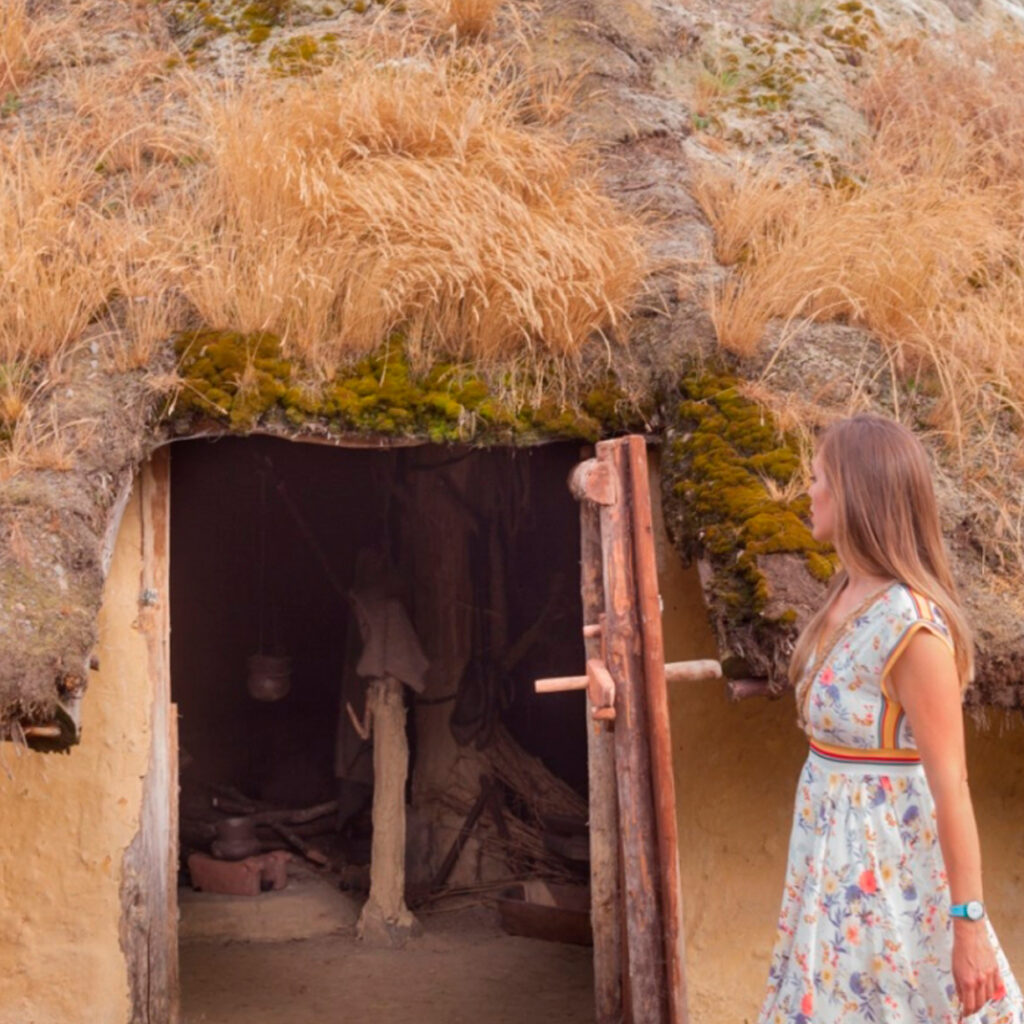
Henaio Hillfort
Near Alegría-Dulantzi you’ll find the Henaio Hillfort. It is an ancient fortified settlement established at the end of the Bronze Age and was active throughout the Iron Age (840-100 BCE).
Archaeological excavation took place between 1969 and 1970 and revealed different phases of the settlement over the course of 800 years. There are some stone walls from the first phase quite deteriorated by farm work. From the next phase, there is an entire floor of one of the dwellings, which has a circular layout. Under this level there is another, which corresponds to the first human settlement on the mountain. It has the remains of the pits dug to anchor the wooden posts for the first buildings. The various stages date back to a range between the 11th-10th centuries BCE (Late Bronze) until the latest stages in the 4th-3rd centuries BCE (Late Iron). People appear to have settled on the mountain due to the major inclines on three of its sides. They bolstered this with artificial defence in the form of terraces and walls. The strongest fortifications were obviously on the southern side, which did not have natural defence. From the top, the people could oversee a natural east-west passage point, as well as the entry of people from the south from the mountains of Vitoria. The hillfort contains reproductions of two Iron Age homes found in the excavations. They have a circular layout with a diameter of 6 metres and are 4.5 metres tall. The space contains walls structured with vertical posts and a curtain wall made of interwoven sticks and mortar. There are also reproductions of two sections of the wall. Each is 8 metres long.
Other Details of Interest
Type of resource: Celtic fort
Period: Iron Age
Google Maps location
Hours: check with the Tourism Office
More information/contact:
Alavese Plains Tourism Office
Calle Mayor, 8. Agurain/Salvatierra. 01200
0034 945 30 29 31
http://www.alegria-dulantzi.eus/es/index.php
Downloads
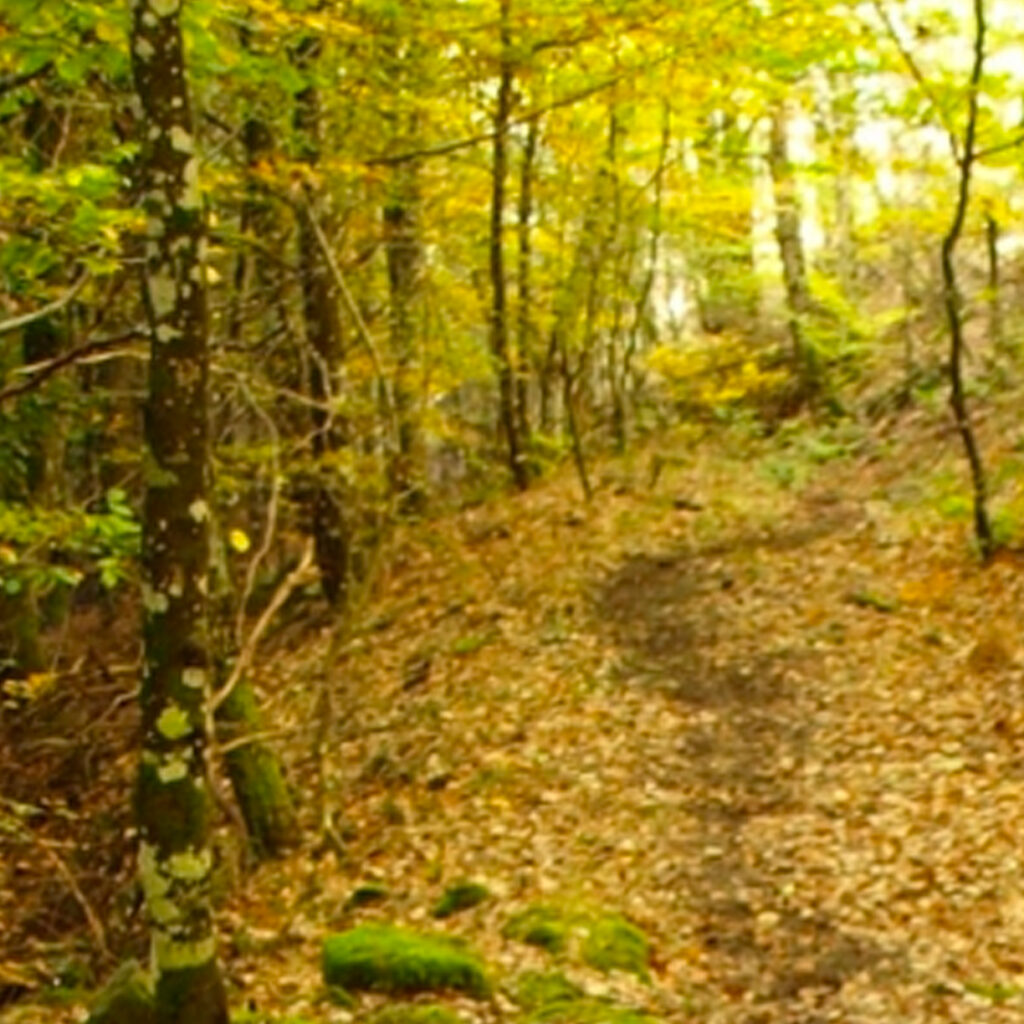
Aldakio Road
Pilgrims from Gipuzkoa arriving in Álava through the San Adrián Tunnel used this road to descend toward Zalduondo. Near Aldakio, the road forked and one way headed toward Vitoria, passing through Galarreta on the so-called Royal Post Route.
What remained of the road has been restored and prepared for people to walk on it. Before this restoration, use and adverse weather conditions had deteriorated it.
More information/contact:
Alavese Plains Tourism Office
Calle Mayor, 8. Agurain/Salvatierra. 01200
Tel.: 0034 945 30 29 31
GEMS OF THE PLAINS
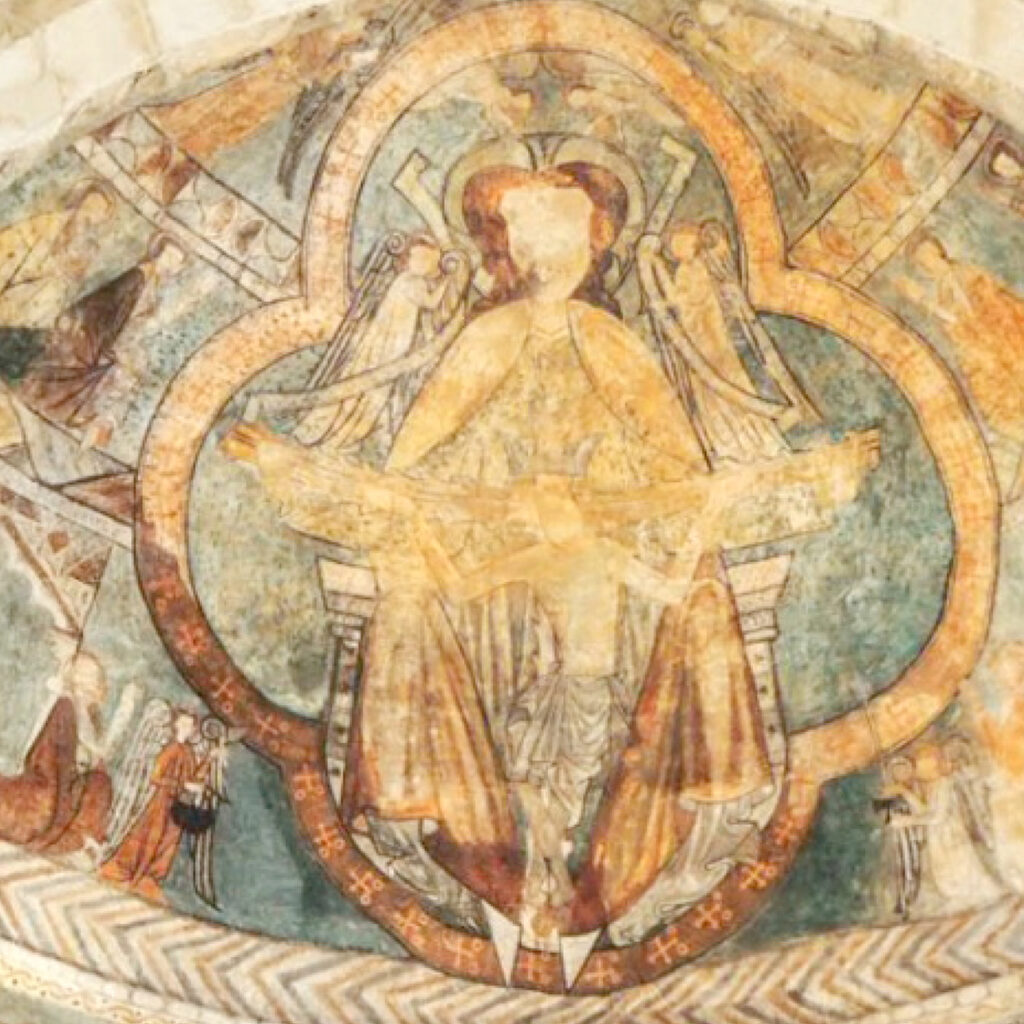
Saint Martin of Tours Church - Gazeo
The country road beginning at the church of Gazeo heading toward Agurain/Salvatierra is actually part of the section of the Way of St. James that goes through Álava, dating back hundreds of years. The dedication to the bishop of Tours also alludes to the intense connection Gaceo has always had with the Jacobean route.
Despite recent restorations, the exterior of the church has the look of a modest rural Romanesque temple. When you walk through the threshold, you’ll see the largest Gothic mural in the Basque Country. It is an exceptional sample of the mastery of unknown studios with little work surviving into the present day.
The paintings were discovered in 1967, when the parish priest and an enthusiastic local reported the presence of large masses of colour behind the Baroque altarpiece. The first restoration efforts revealed a set of statues that, over the course of successive campaigns, would complement the paintings covering the high altar vault.
They were likely designed for funeral rites, to help save the soul of the anonymous person who paid for them. Thus, these paintings provide an entire geography of the afterlife of Medieval Christianity, as it was understood in the 14th century.
The apse basin shows a large Thronum Gratiae comprising the holy trinity: the Father, the Son on the cross and the Holy Spirit in the form of a dove. The lower left-hand section of the apse displays an image of the stations of the cross with Christ on the cross surrounded by Mary and Saint John the Evangelist. The scene includes the presence of Longinus, piercing Jesus’s side, while Stephaton brings a sponge soaked in vinegar to Christ’s lips.
On the right-hand side appears the weighing of the souls of the dead, led by Saint Michael. A demon attempts to pounce on one of the scales to change the result, but he is stopped by the archangel, who pierces his body with a lance.
While the chevet shows heavenly glory in all its splendour, the southern wall of the church depicts the opposite: the torments of hell. A number of naked souls with wretched countenances go into the jaws of the fearsome Leviathan while, above, others burn eternally in a fiery cauldron.
The final depiction covers the high altar’s barrel vault. It provides a highly detailed portrayal of the life of Christ from his birth until his death and final ascension into heaven.
Gaceo provides a lively example of the vibrant and colourful aspect of the churches in the area, which the passage of time and often inopportune intervention has blurred. Luckily, this small rural church still conserves the desires and hopes of the people of the 14th century aspiring to eternal life.
Other Details of Interest
Type of resource: Religious building – Romanesque church with paintings
Period: 12th century
Google Maps location
Hours: inquire about guided tour hours at the Alavese Plains Tourism Office.
Guided tours: guided tours are given of this church and the one in Alaitza, every Saturday and Sunday at 11:00 am, as well as on Tuesdays and Thursdays in July and August at 11:00 am. The full tour is approximately 2 hours. Individual vehicle necessary to travel between Gazeo and Alaitza. The price is €4 for the tour of both churches; €7 if you would like to tour the Añua and Arbulu churches or the old quarter of Agurain. Children under 12: free. Reservations at the Alavese Plains Tourism Office.
More information/contact:
Alavese Plains Tourism Office
Calle Mayor, 8. Agurain/Salvatierra. 01200
0034 945 30 29 31
Gems of the Plains Brochure
Guided Tours of the Gems of the Plains
Medieval Álava Public Heritage Datasheet
Audio
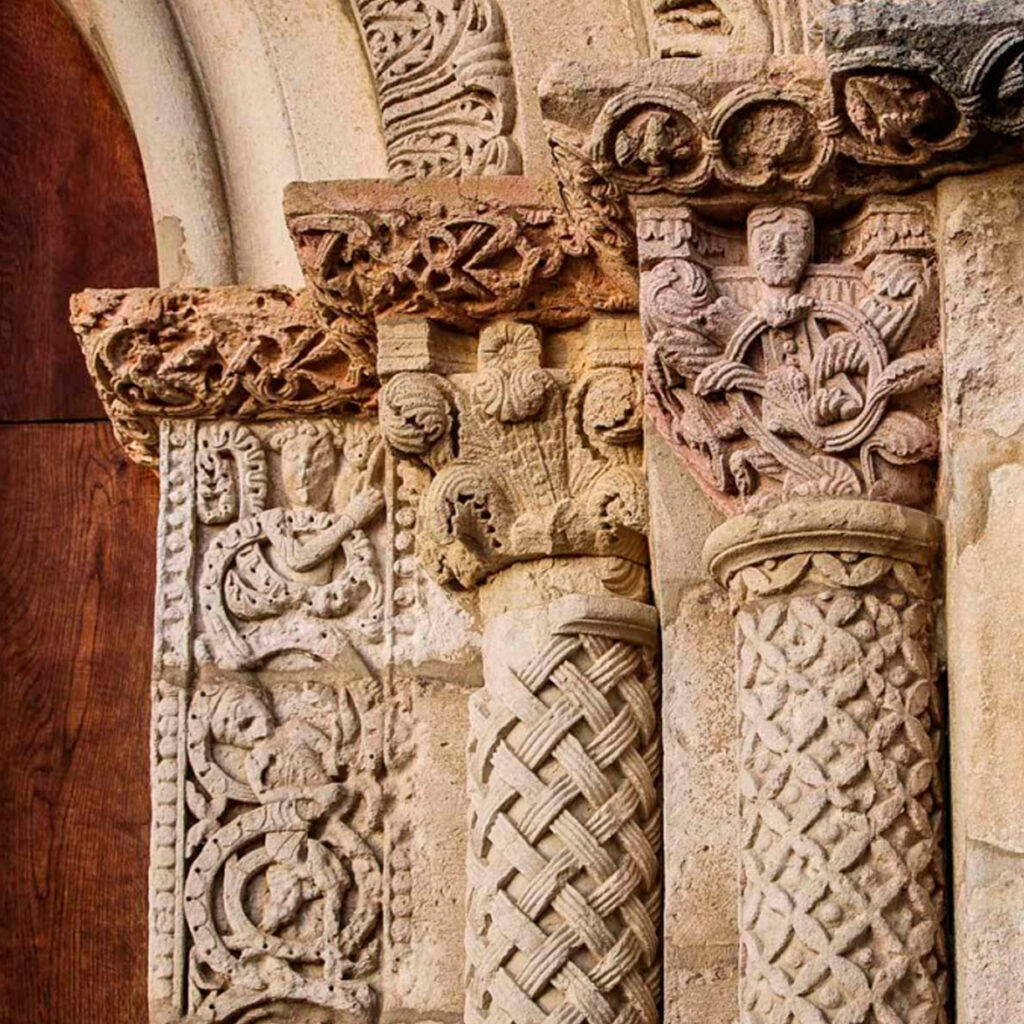
Romanesque Information Centre - Estíbaliz Sanctuary
Just 10 kilometres from Vitoria-Gasteiz, atop a hill that has been turned into a natural park, lies one of the Romanesque gems of the Basque Country.
The church built in the mid 12th century has been converted into a sanctuary housing the Medieval sculpture of the Virgin of Estíbaliz, the Patron Saint of Álava.
The elegance of its Porta Speciosa, beautifully enveloped in both natural and sculpted décor, the solemnity of its three apses, the originality of its corbels, the beauty of its baptismal font and the mastery of the capitals inside come together to offer visitors a true journey into the past.
The modern Álava Romanesque Information Centre is nearby, a great place to learn more about the distinctive features of this style in the territory of Álava, its variety, its geographic scope and its rich ornamentation. This is the perfect starting point for delving into the Romanesque sites of Álava and Treviño. All that knowledge gained can be complemented with a stroll through the forests, paths and trails connecting the Sanctuary of Estíbaliz with the major Romanesque churches around the Alavese Plains.
Other Details of Interest
Type of resource: Religious building – Sanctuary / Information centre
Period: Mid 12th century
More information/contact:
Estíbaliz Sanctuary Álava Romanesque Information Centre
Cerro de Estíbaliz s/n. 01193 Villafranca de Estíbaliz
TEMPORARILY CLOSED
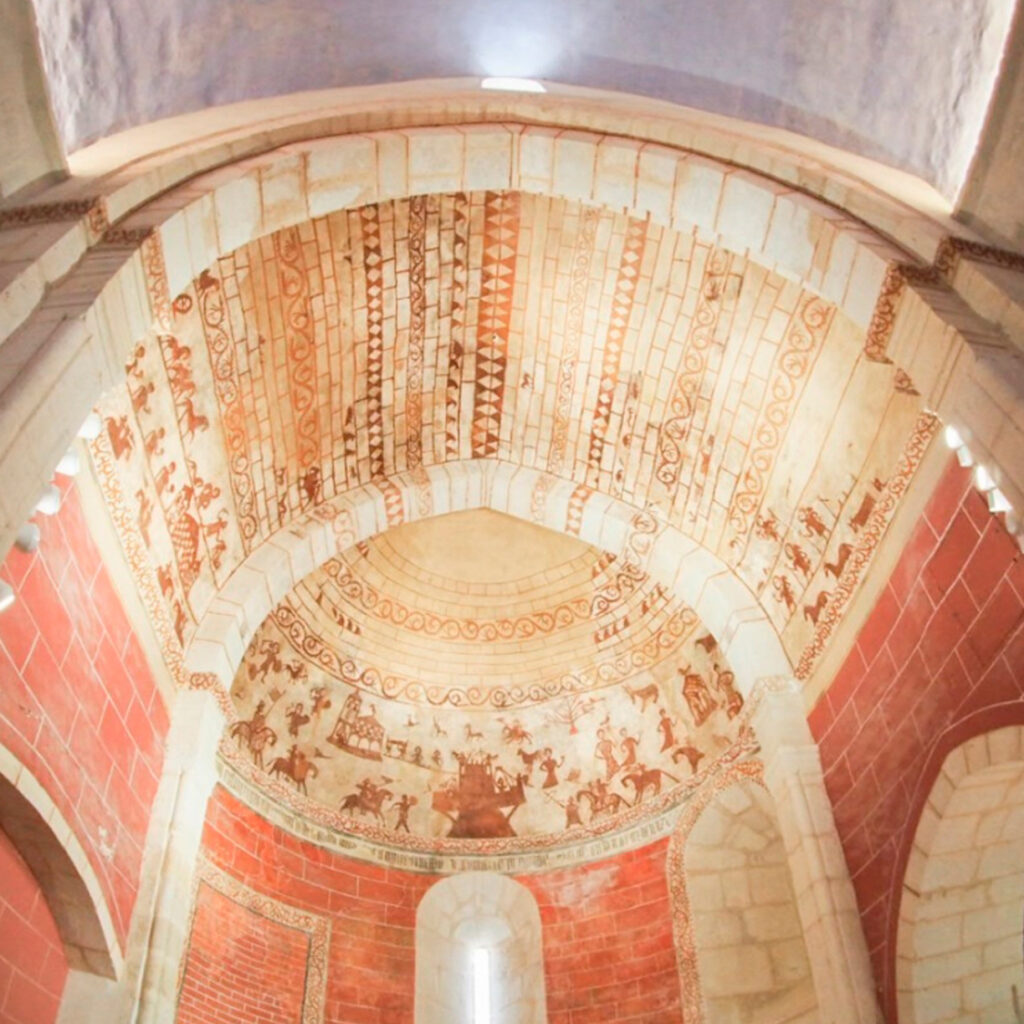
Our Lady of Assumption Church in Alaitza
In a location removed from the major roads of the province, in the foothills of the Entzia mountain range, lies the small town of Alaiza. Its streets and grand stone homes tell the story of a past of working the land and shepherding, but nothing foreshadows what you’ll find inside the church.
The first evidence from the town of Alaiza comes from a later period, the mid 13th century, so we do not know who was responsible for building the 12th century Romanesque church.
Its exterior has some peculiarities. There are two Romanesque façades, indicating that it had a portico that is now in ruins. You can also sense the presence of two naves, something unusual in the region. If you walk along the exterior of the chevet and look closely, you’ll curiously find an ancient Roman stele among the masonry of the walls. Although there is no documented evidence to prove it, the archaeological artefacts indicate that this land has been inhabited from time immemorial.
But the true surprise can be found inside. After passing under an enormous arch separating the side aisle from the central nave, the religious images in the apse dominate the view. The entire high altar cupola and apse basin are fully covered in curious red paintings whose strangeness have prompted all kinds of readings and interpretations.
The centre of the apse, the most important place, shows the siege of a castle. Some characters attempt to defend it from within, while they watch eight knights attack, equipped with lances, shields and crossbows. One of them is wearing fine clothes and a crown on his head, clearly identifying him as a king.
Next to him is a procession of women with gifts in hand, headed toward a house. Inside, there are two richly adorned women. This is likely to be a celebration of a birth, as one of the side walls shows the scene of a woman giving birth.
War, life and also death. A funeral procession exits the castle. A group of women accompany two men carrying the body on their shoulders.
In short, the Alaiza paintings show everyday scenes of noble Medieval life. Surprisingly, there are no traces of religious imagery, something explained by the fact that these churches were built as wholly private spaces for exalting and maintaining of the memory of the lineages that built them.
Other Details of Interest
Type of resource: Religious building – Romanesque church with 14th century paintings
Period: 12th century
Hours: inquire about guided tour hours at the Alavese Plains Tourism Office.
Guided tours: guided tours are given of this church and the one in Gazeo, every Saturday and Sunday at 11:00 am, as well as on Tuesdays and Thursdays in July and August at 11:00 am. The full tour is approximately 2 hours. Individual vehicle necessary to travel between Gazeo and Alaitza. The price is €4 for the tour of both churches; €7 if you would like to tour the Añua and Arbulu churches or the old quarter of Agurain. Children under 12: free. Reservations at the Alavese Plains Tourism Office.
More information/contact:
Alavese Plains Tourism Office
Calle Mayor, 8. Agurain/Salvatierra. 01200
Tel.: 0034 945 30 29 31
Gems of the Plains Brochure
Audio
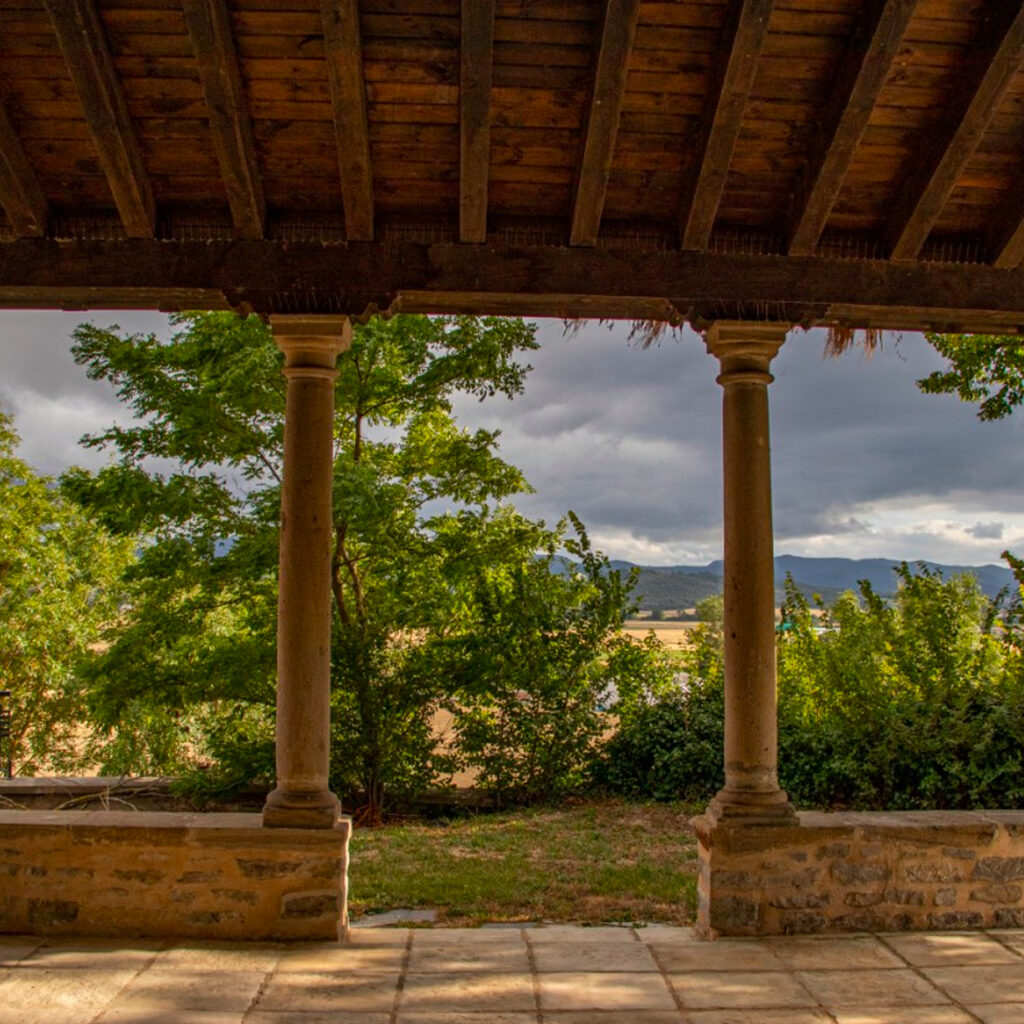
Saint Martin of Tours Church - Arbulu
The impressive location of the church of Arbulu is an indicator that it is one of the major temples of the Alavese Plains.
At the top of this hill you can see Argómaniz, Oreitia, Matauko and, in the distance, the mountain where the Sanctuary of Estíbaliz can be found. This point also offered views the passage of the pilgrims on the Way of St. James, whose distant echoes can still be found in the scallop shells adorning the capitals at the entrance of the temple.
The church of Arbulo was on the verge of falling down just a few decades ago, when its wooden roof caved in and its stone vaults were exposed to the elements. Fortunately, an emergency restoration effort saved this extraordinary building and revealed surprising pictorial artefacts beneath various layers of whitewash.
The spaciousness and richness of the church’s rib vaults indicate that the building is from the late 15th century. However, if you take a closer look at the chevet, you’ll find the building’s history is much more complicated… The removal of the altarpiece – now on display at the Sacred Art Museum in Vitoria-Gasteiz – revealed the paintings on the 12th century Romanesque chevet, whose wall was preserved at the start of a modern-era addition.
Proper restoration exposed the original polychrome: a startling set of intense red ochre figures, an image difficult to interpret. Battling birds, strange quadrupeds, wheels, stars, trees, dark symbols… And most amazingly, not a single religious image except for two consecration crosses flanking the large window. For reasons unknown, the people who commissioned the paintings on this wall wanted to show the nature around them, the sky, the land, the animals… In short, what the people of the 12th century lived on.
If you look up to the vaults of the church, you’ll see a section of chevet with one of the best Gothic keystones in all of Álava. Surrounded by saints, the central keystone contains the image of the Madonna and Child accompanied by the various Saint Johns. If you look to the southern end of the church, you’ll find a 15th century couple decked out in their finest. A woman appears holding a decorated sceptre, accompanied by a man holding a circular object. This is the lively portrait of the couple who footed the bill to expand the church. They most likely belonged to the Arbulo line, as reflected in the heraldic shield in another of the church’s keystones. It shows how the people who defrayed this work left their mark for posterity in stone and pigment.
Other Details of Interest
Type of resource: Religious building
Period: 16th century
Hours: inquire about guided tour hours at the Alavese Plains Tourism Office.
Guided tours: guided tours are given of this church and the one in Añua, every Saturday 1:00 pm, as well as on Tuesdays in July and August at 1:00 pm. The full tour is approximately 2 hours. Individual vehicle necessary to travel between Arbulu and Añua. The price is €4 for the tour of both churches; €7 if you would like to tour the Gazeo and Alaitza churches or the old quarter of Agurain. Children under 12: free. Reservations at the Alavese Plains Tourism Office.
More information/contact:
Alavese Plains Tourism Office
Calle Mayor, 8. Agurain/Salvatierra. 01200
Tel.: 0034 945 30 29 31
Gems of the Plains Brochure
Audio
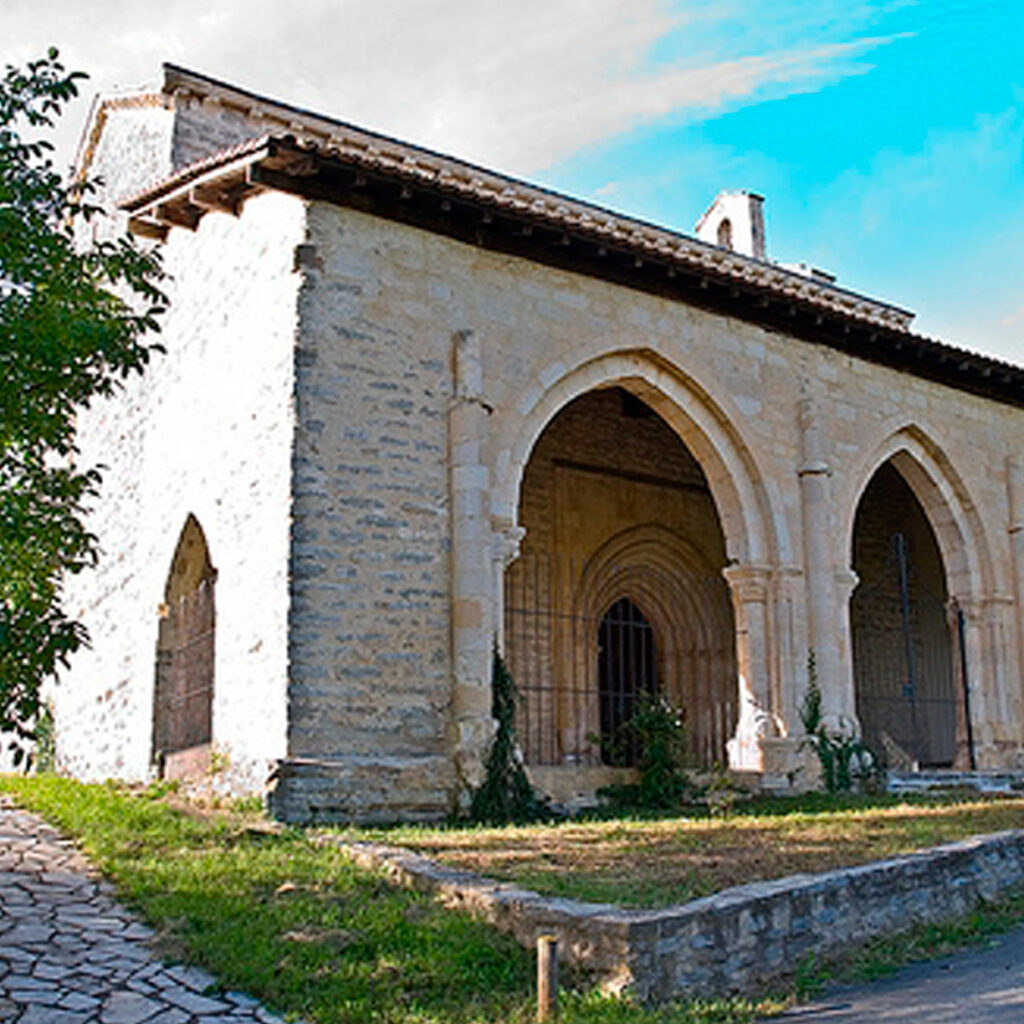
Sanctuary of Our Lady of Ayala Hermitage
The Our Lady of Ayala Hermitage is a Romanesque building from the 13th century. It is located in what is currently the unpopulated town of Ayala.
Inside the hermitage, the corbels stand out with curious zoomorphic shapes as well as 12 Medieval consecration crosses. The temple is part of one of the stages of the Way of St. James.
Other Details of Interest
Type of resource: Religious building
Period: 13th century
Hours: the hermitage is closed except for religious pilgrimages and guided tours.
Guided tours: guided cultural tours of Alegría-Dulantzi were given in summer 2020, including the Henaio Hillfort, the abandoned town of Ayala and the old quarter of Alegría-Dulantzi. Inquire about upcoming tours at the Tourism Office.
More information/contact:
Alavese Plains Tourism Office
Calle Mayor, 8. Agurain/Salvatierra. 01200
Tel.: 0034 945 30 29 31
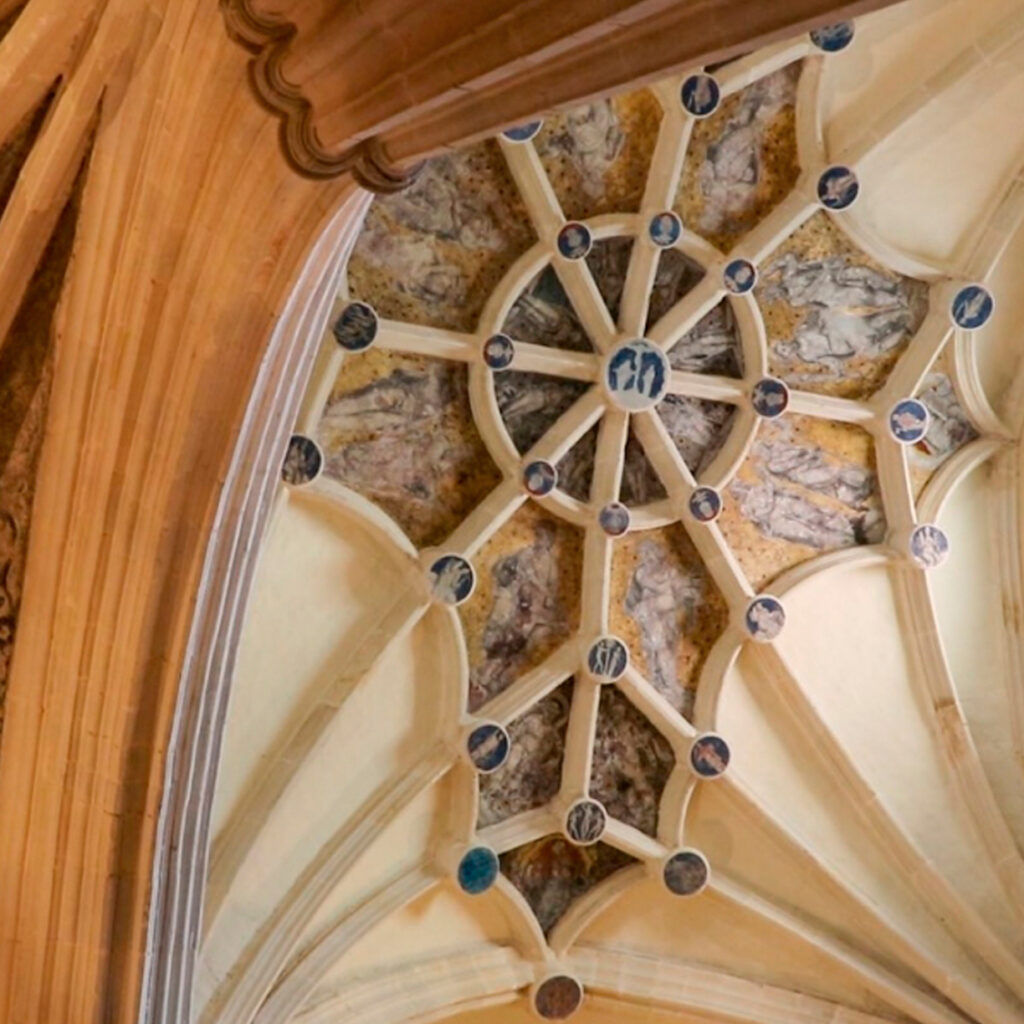
Nativity Church of Añua
Añua is located at the heart of the Alavese Plains, between Alegría-Dulantzi and Elburgo. Although it is not on the Way of St. James, in the Middle Ages the church was likely more connected both to the pilgrimage and with other trade routes through Álava.
Although the town of Añua has had a stable and relatively small population, the families that ruled and developed the land and pastures around the town amassed significant amounts of wealth. The clout of the local nobility explains the ambition and artistic quality in the church.
Construction on the building began in the late 12th century and the first stage lasted well into the 13th century. The best Alavese Romanesque studios participated in the building project, though with an important novelty. Perhaps for the first time, these master builders tried their hands at a new trend: Gothic.
Thus, the Añua church is usually described as a church of transition: when the Romanesque period, with its large windows and corbels, gave way to the incipient Gothic period, seen with the vertical nature of the facings and the beauty of the ribbed vaults of its chevet. Before you head inside, don’t forget to take a look at the corbels supporting the eaves. An amiable sculptor awaits there, flanked by two incredibly surprising exhibitionists.
The two different building phases discernible from the exterior are on full display inside. The Medieval chevet connects to a great covered nave with a vault with Renaissance paintings made in the mid 16th century. The patrons of the Otazu-Guevara family paid to open the chapel on the northern wall dedicated to Saint Sebastian, where there was a magnificent consecrated altarpiece dedicated to the life of the saint.
When the church was restored in the 1990s, Medieval wall paintings were found behind the Baroque altarpiece in the chevet. Interestingly, the paintings of the usual red ochre over white lime show the siege of a castle, very reminiscent of the paintings in Alaiza.
The Añua church acts as a clear mirror of the past, shedding light on the transformations the town and its temple have undergone. In boom times, residents of the town started an ambitious project at the impetus of the noble families that ruled these lands, it was added onto until it bore the beautiful religious images still on display today.
More information/contact:
Alavese Plains Tourism Office
Calle Mayor, 8. Agurain/Salvatierra. 01200
Tel.: 0034 945 30 29 31
Gems of the Plains Brochure
Audio
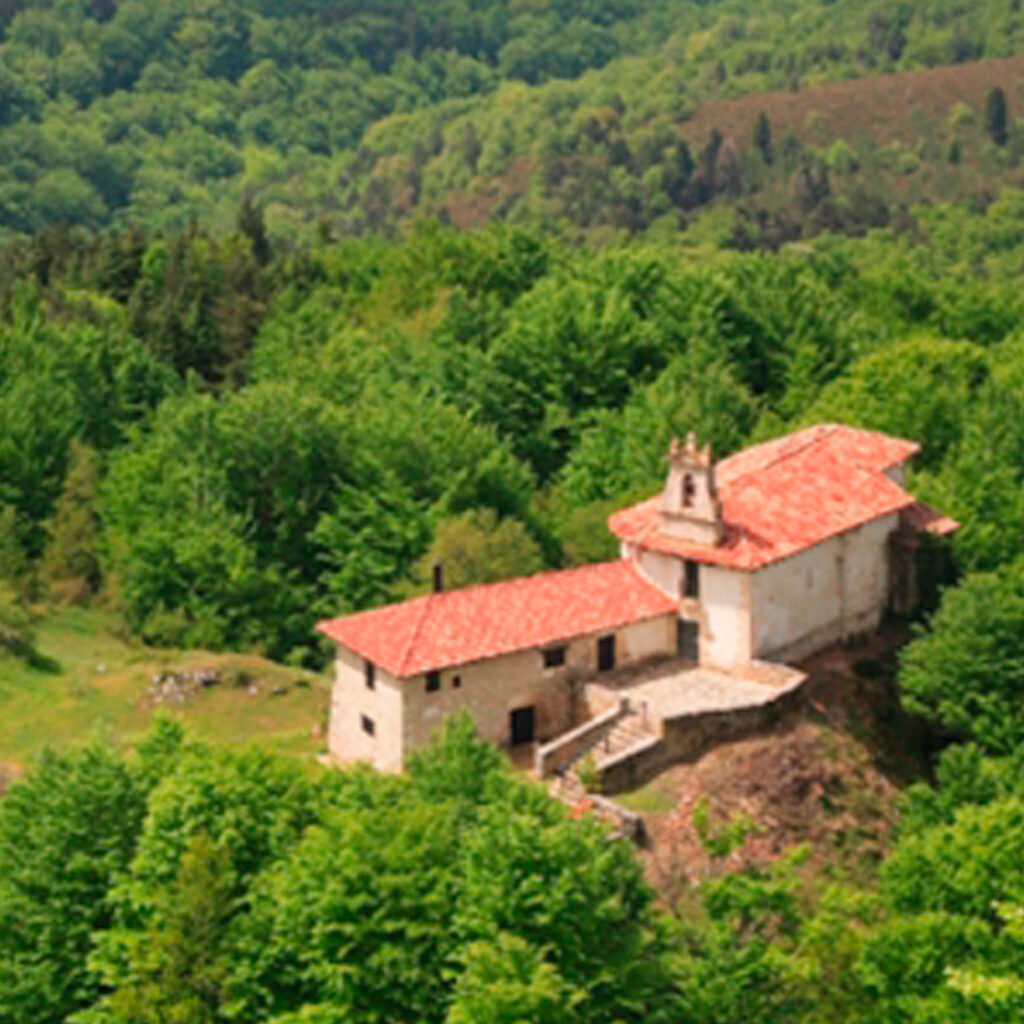
Saint Bitor
Starting from the Azazeta pass or the centre of Gauna, head to the Hermitage of Saint Bitor, located just a few metres from the summit of Itxogana, next to a recreation area.
The hermitage is rustic in style. Saint Bitor was from the town of Elorriaga in Álava.
The residents of Gauna keep Saint Bitor’s cranium in a silver container. Every year they bring it up to the hermitage and let water pass through it. This water is then used to bless the fields. It also acquires healing powers.
More information/contact:
Alavese Plains Tourism Office
Calle Mayor, 8. Agurain/Salvatierra. 01200
Tel.: 0034 945 30 29 31
CIVIL AND INDUSTRIAL HERITAGE
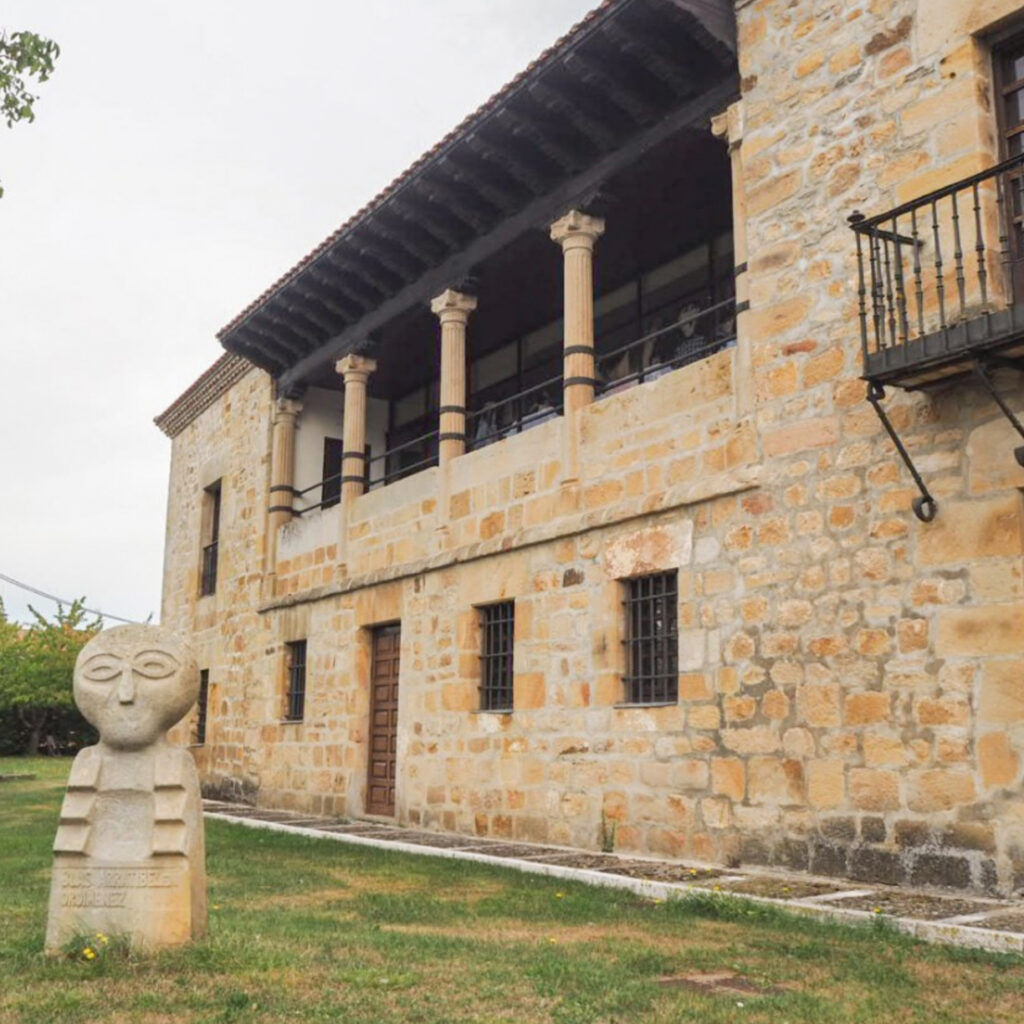
Kulturgune - Ethnography Museum of Zalduondo
Next to Zalduondo Church, you’ll find the Lazarraga-Amezaga Palace, a 16th century structure currently housing the Ethnography Museum.
It houses several collections of religious artefacts, paintings, pottery and wood carvings that help visitors understand the area’s history, culture and art.
The exterior of the building notably has a monumental shield and stone sculpture, a carving made in homage to Blas Arratibel, a man from the town who made contributions to the town’s popular culture.
The Ethnography Museum of Zalduondo displays several centuries of history, ethnography, folklore and art in the region. The palace housing the collection is a work of art in and of itself, especially its 16th century wall paintings. The space dedicated to the traditional country Carnival celebrations in Álava is particularly worth mentioning. It shows the various characters of the festivities.
Other Details of Interest
Type of resource: Cultural centre – Museum
Google Maps location https://goo.gl/maps/bKMBTGdmUhNif5gw8
Hours: Sunday 12:00 noon to 2:00 pm
Guided tours: Groups tours can be arranged by calling 0034 945 304 393.
More information/contact:
At the Kulturgune: 0034 945 304 393 / lurleku@gmail.com or at the
Alavese Plains Tourism Office
Calle Mayor, 8. Agurain/Salvatierra. 01200
Tel.: 0034 945 30 29 31
Kulturgune – Ethnography Museum Brochure
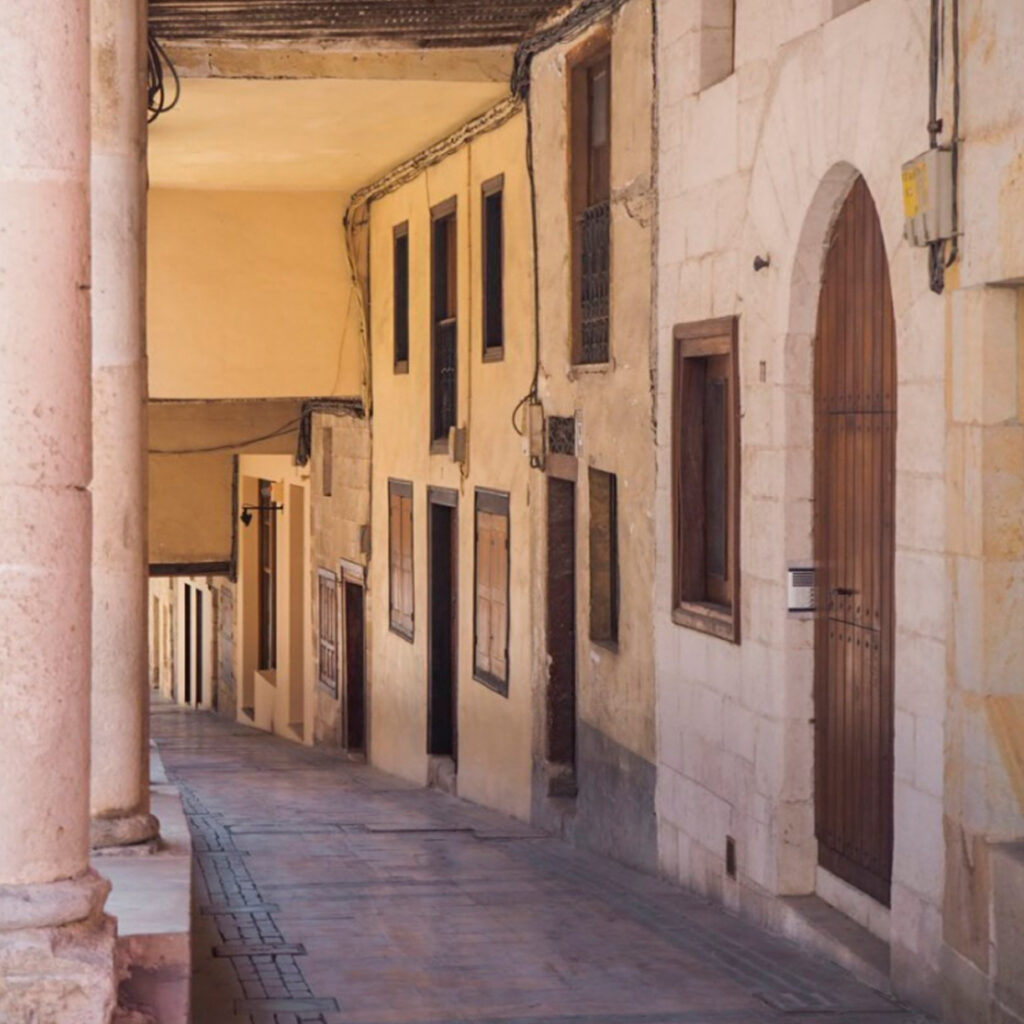
Old Quarter of Agurain
The walled town of Agurain/Salvatierra is one of the places in Álava that best preserves the essence of the history between its walls.
Despite a dreadful fire in the 16th century, its Medieval lattice still endures as well as a substantial part of its walls and religious temples: the Gothic churches of Saint John and Saint Mary, and the curious Romanesque hermitage of Saint Martin.
A walk along its Renaissance and Baroque palace-adorned streets, its old Jewish quarter, and a glimpse of the olbeas (colonnades built for its crowded markets) will help you better understand the past and present of this town still retaining its noble nature.
Documents from the 11th century speak of the existence of a small village known as ‘Hagurahin’. With barely 50 residents, its strategic position caused the King of Castille Alfonso X to set his sights on it to found a prosperous walled city. Only a few kilometres from the border with the Kingdom of Navarre and directly on the most active trade and pilgrimage routes, the newly-founded Salvatierra developed gradually over the centuries and that development is perfectly marked on its streets and in the civil and religious constructions that have been conserved into the present.
With the panoramic guided tour, you’ll be able to appreciate the majesty of the two largest parishes: Saint Mary’s and Saint John’s. The former is a Gothic building with one of the most spectacular plateresque choirs in Álava. Its altarpiece by acclaimed local sculptor Lope de Larrea is a unique example of the expertise of local artists in the late 16th century. Designed as a true fortress church, Saint John’s boasts an imposing Baroque portico on one of the town’s main squares. Its chemin de ronde also offers breath-taking views of the neighbouring Aizkorri-Aratz mountains.
Strolling down its streets, you’ll find other historic artefacts, such as the famous olbeas, long covered streets built to protect merchants from bad weather.
A route has been designed with 10 points of interest. There are QR codes at each point to explain the town’s history and architecture.
Other Details of Interest
Type of resource: Old quarter.
Hours: inquire about guided tour hours at the Alavese Plains Tourism Office.
Guided tours: guided tours are given of the old quarter of Agurain every Sunday at 1:00 pm, as well as on Thursdays in July and August at 1:00 pm. The full tour is approximately one hour. The price is €4; €7 if you would also like to tour the Gazeo and Alaitza churches or the churches of Añua and Arbulu. Children under 12: free. Reservations at the Alavese Plains Tourism Office.
More information/contact:
Alavese Plains Tourism Office
Calle Mayor, 8. Agurain/Salvatierra. 01200
Tel.: 0034 945 30 29 31
Brochure
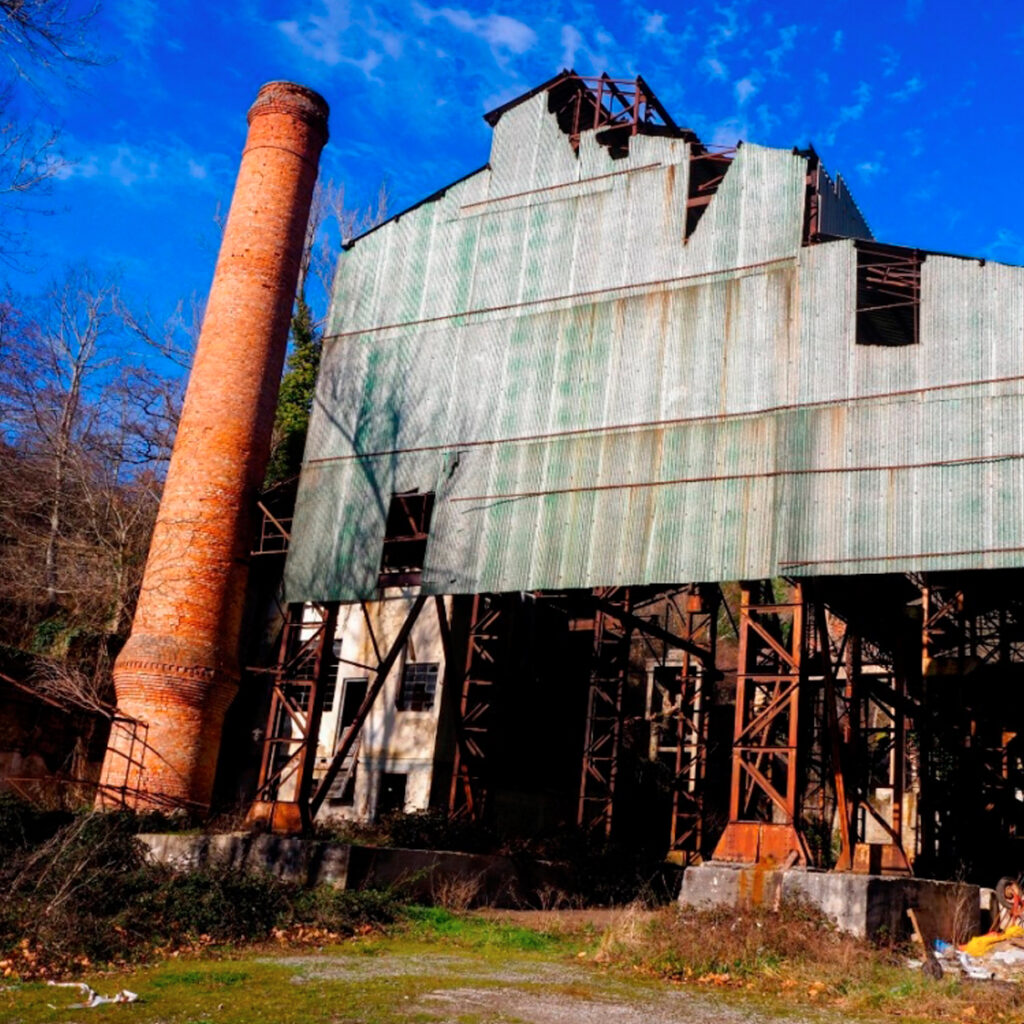
Industrial Forest of Ajuria-Urigoitia
One of the most beautiful industrial settings in the Basque Country: the Ajuria and Urigoitia foundries in Araia (Asparrena, Álava). Dams, forests, coal bunkers, warehouses, and more.
This was one of the first metal works in the country, located at the entrance to Aizkorri-Aratz Natural Park, a place where nature and industry are inseparable.
Araia has long been a prime location for the iron industry. The Aratz iron mines, the richness of logging and the abundance of water in the area all made Araia one of the most renowned forges in the province.
Although Araia had foundries prior to this one, the San Pedro de Araia forge complex, or the Ajuria plant as it is currently known, was the most prominent. From 1848 until its closure in 1985, it was at the vanguard of metallurgical industrial complexes. The ploughs and later the threshers brought the name Araia to the country. This was the place where the first electric induction furnace was installed in Spain and one of the first blast furnaces in the Basque Country. It was the first modern steel company in the Basque Country, along with Bolueta (Bizkaia).
The Ajuria Plant marked several milestones. ‘The fact that in 1929 the company became the only Spanish company producing iron with puddling and that in 1933 it became the only producer of charcoal ingots contribute to interest in the company. If that not wasn’t enough, the company was at the centre of another historic milestone of Spanish steelmaking: in 1906, it began operating the first electric furnace in Spain to manufacture steel, thus making it an early adopter of a technology can be said to have been in the experimental phase, as the first tests in Europe had been conducted only 10 years earlier’.
Other Details of Interest
Details of Interest
Type of resource: Industrial heritage
Date: 19th century
Google Maps location https://goo.gl/maps/Ycc3hruKLekoBnM38
Hours: always open.
Guided tour: NA.
Accessibility: there is parking at the plant.
More information/contact:
Aizkorri-Aratz Visitors’ Centre
Intuxi Kalea, 48. Araia
Tel: 0034 945 38 69 64 / 0034 688 62 99 32
parketxe.aizkorriaratz@gmail.com
ARTISTS AND ARTISANS
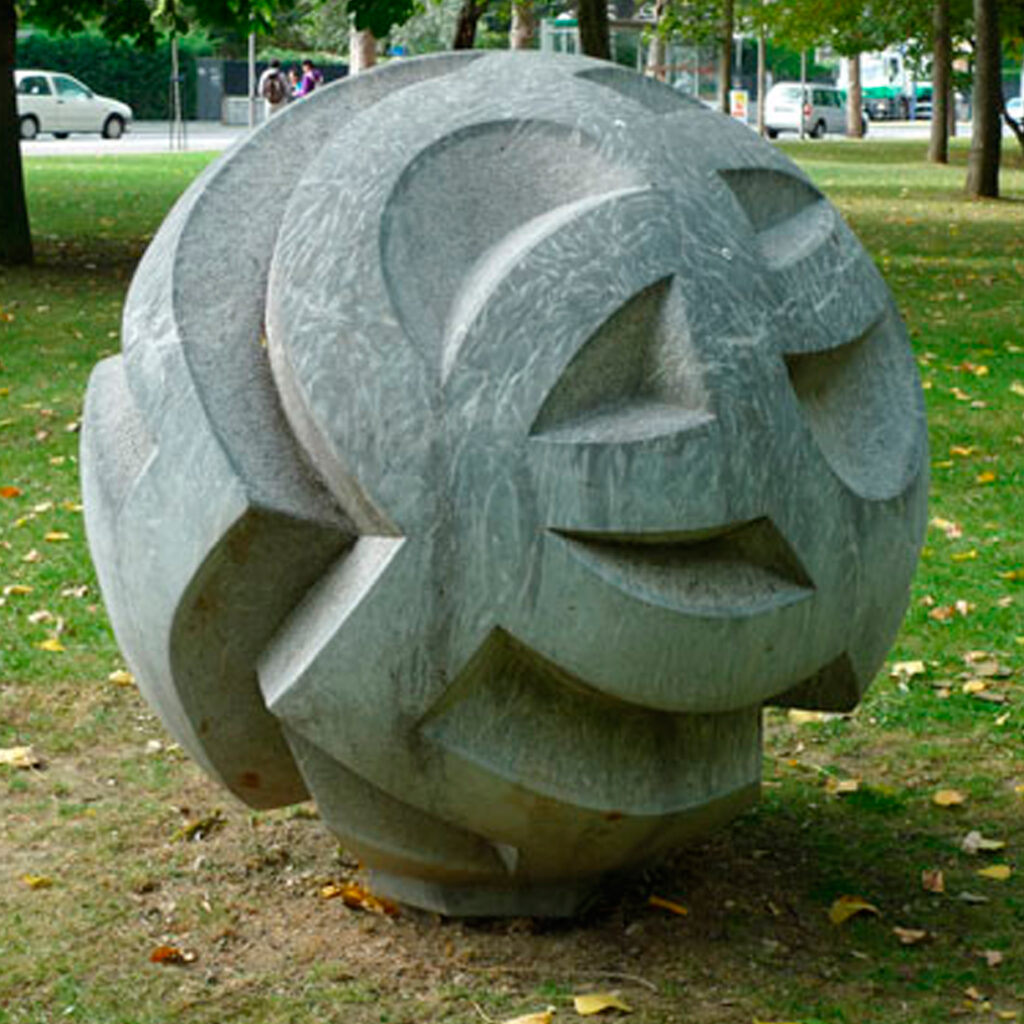
Paco San Miguel - SCULPTOR
A classically trained sculptor working since the late seventies, Paco San Miguel has carried out individual studies purposefully out of the mainstream, a personal investigation based on the relationship between humans and nature and the material (principally marble) that he works with, pierces and subverts as the means to incorporate this relationship into and over the space, its emptiness and its presence.
His use of reason over the drive of intuition when he takes on the material allow him to deal with a variety of scales and progressions both in his unique interior and exterior pieces as well as in statuaries inserted into public squares and natural environments.
With a holistic view imbuing all of his work and attitude toward life, the Earth and mythological and ethnographic traditions of the Basque people leave their mark on his creations. In their cut and shape, abstraction has become its own language and characteristic, a language of philosophical and metaphysical cornerstones where the human experience and the metamorphosis of our contemporary environment are pitted against the forces of nature of the self and its territory. Geometry and repeated use of circles and straight angles afford his sculptures a formality and symbolism as an emphatic and balanced reflection of the interior and exterior landscape.
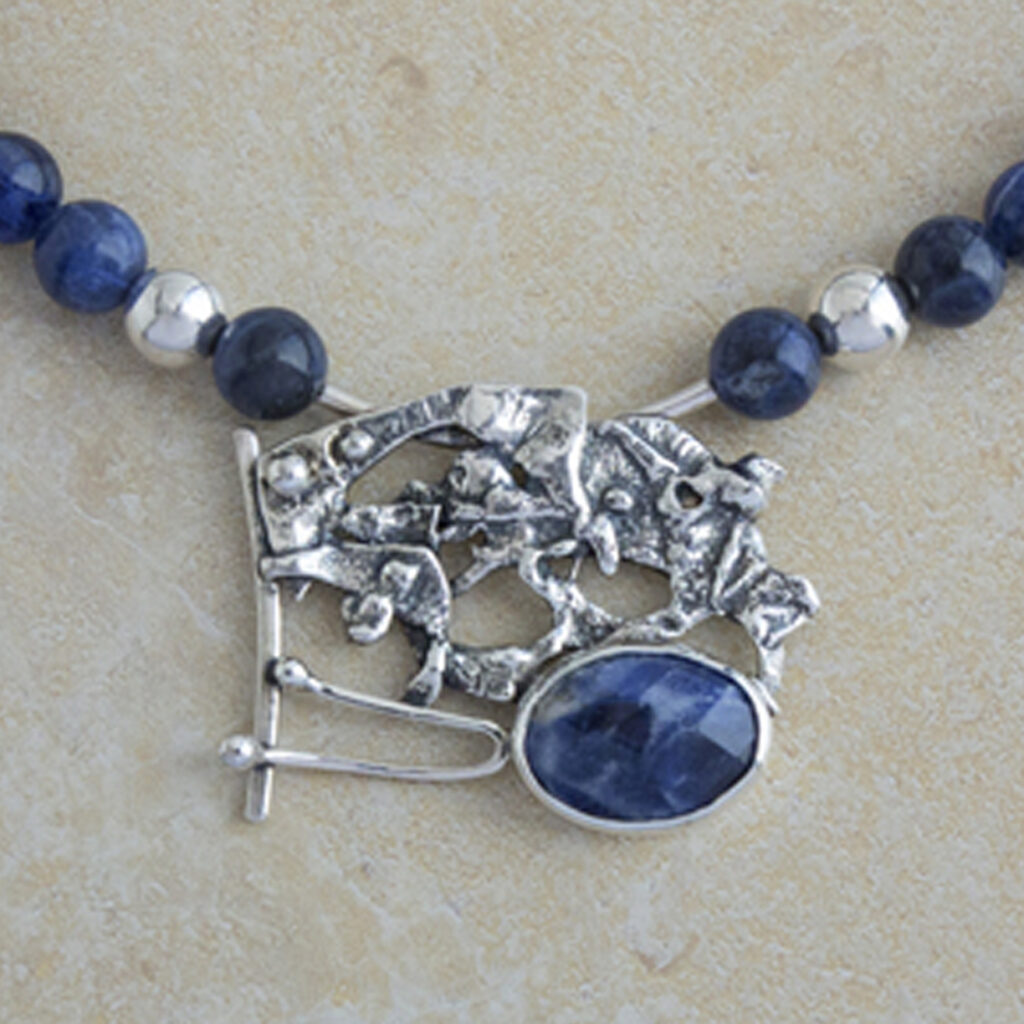
Txus Gruzeta - JEWELLERY
Creativity is the way. A piece of jewellery isn’t just adornment, it is something you wear… and something that wears you.
Work
Jewellery making and design. Jewellery courses in my studio and costume jewellery courses for park districts.
Raw materials
Mainly silver, as well as gold, bronze, brass and tin. Organic stones and materials. Enamel and acrylic resins.
Production techniques
Pieces made with basic jewellery techniques, fretwork, polishing, engraving, etc. Some are made using smelted bases. They are all soldered together with silver.
Work process
She prepares the metal according to the needs of the piece to be made using sheets and threads of different thicknesses. The piece is built by soldering the various parts with silver solder. Some of these pieces are made with lost wax bases. They are then cleaned in acid, retouched and polished. When she uses stones, they are mounted before polishing. Acrylic resins are applied to the finished metal before the piece is put into the kiln.
About the studio
I started assembling trinkets for different shops and selling them in summer markets in 1985.
Travelling through different countries in South America, North America and India, I began to learn different jewellery making techniques. I took a gemmology course at the department of minerals and gems at Ouro Preto University in Brazil.
In 1992, I founded my studio in Arrasate.
I have taken various courses in Barcelona including “Interpreting a jewellery design” at the Escola d’Arts i Oficis and an introduction to wax modelling with the same professor, Ana Font.
In 2006, I moved my studio to Heredia-Barrundia.
